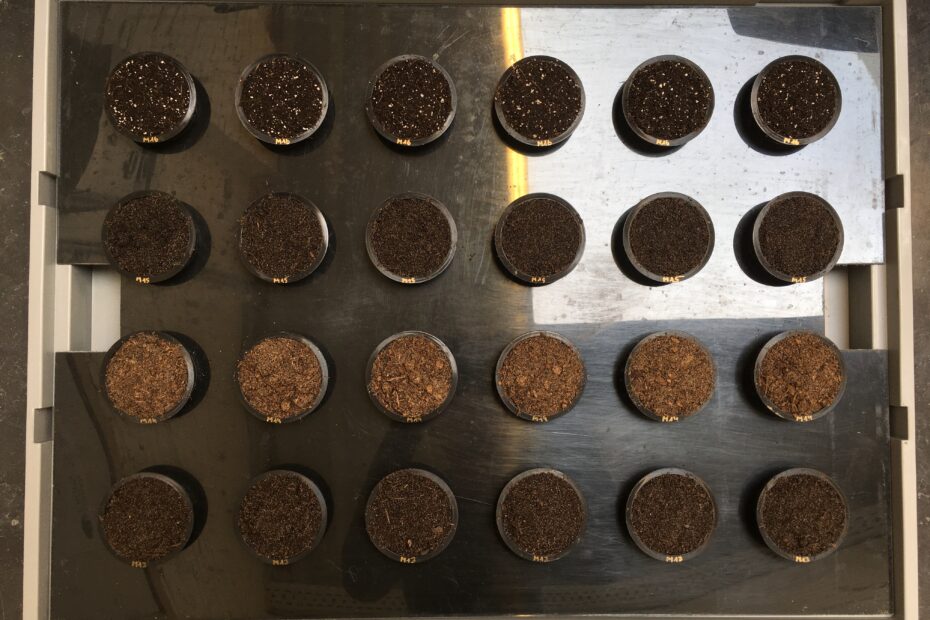Highlights: Use of fractional factorial DOE as a tool for optimization of peat-reduced growing media.
Growing media composition greatly affects microbial activity.
Physicochemical analysis revealed water-filled porosity to be a key determinant of microbial activity in growing media.
Abstract: The development of peat-reduced plant growing media for horticulture is needed to tackle sustainability concerns related to the peat production process. Alternative growing media constituents with unique physicochemical properties, like coir pith, wood fiber, compost, and inorganic materials are currently used. However, little is known about the impact of these materials on microbial activity. Because microbial communities play an important role in plant growth and development, the impact of various growing media constituents on microbial activity was analyzed using two-level fractional factorial statistical design of experiments. The results showed that growing media composition greatly affected microbial activity. White peat (+2.4% CO2) and composted bark (+1.5% CO2) significantly promoted microbial activity over black peat and green waste compost respectively. In contrast, the organic materials coir pith and wood fiber, as well as the inorganic materials perlite and sand, had little effect on microbial activity. Physicochemical analysis of the different growing media mixtures revealed that the water-filled porosity (WFP) was the most important parameter driving microbial growth, increasing microbial activity (+2.1% CO2) at 62.95% WFP compared to 82.95% WFP. Our results are instrumental for developing novel organic growing media with distinct microbial features to move towards a low peat sustainable horticulture.
Thijs Van Gerrewey a,b,c,d, Nele Ameloot c, Oscar Navarrete d, Maarten Vandecruys d, Maaike Perneel e, Nico Boon b, Danny Geelen a
a Horticell, Ghent University, Coupure Links 653, B-9000, Gent, Belgium
b Center for Microbial Ecology & Technology (CMET), Ghent University, Coupure Links 653, B-9000, Gent, Belgium
c Agaris Belgium NV, Skaldenstraat 7a, B-9042, Gent, Belgium
d Urban Crop Solutions BVBA, Grote Heerweg 67, B-8791, Beveren-Leie, Waregem, Belgium
e Cropfit, Ghent University, Coupure Links 653, B-9000, Gent, Belgium
